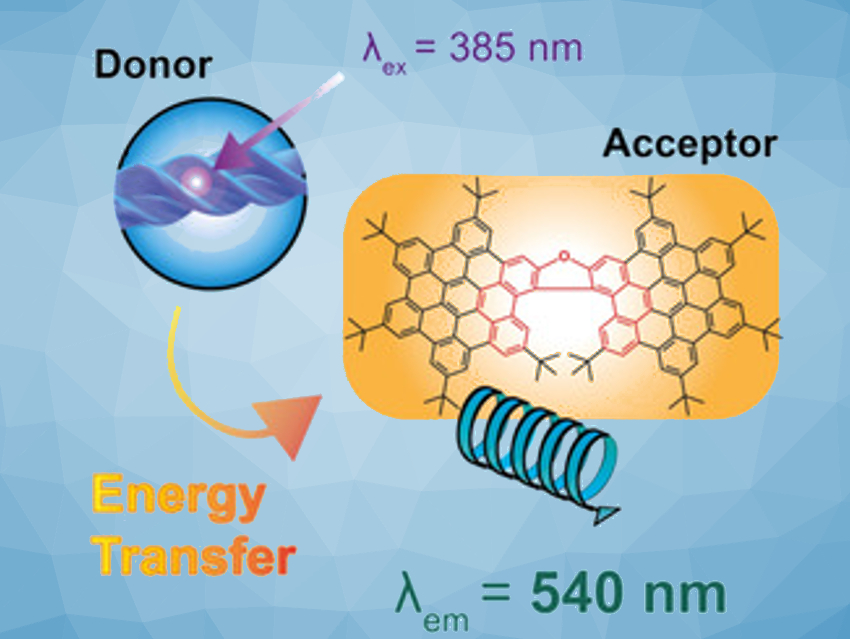Chiral emissive molecules can generate light with circular polarization (CP) directly. Most chiral small organic molecules emit light with <1 % circular polarization. In contrast, polymer-based systems that can form a macromolecular chiral phase can show emissions with a significant degree of circular polarization.
Matthew J. Fuchter, Imperial College London, UK, and colleagues have embedded the chiral small molecule acceptor oxa[7]superhelicene (pictured) within achiral, fluorene-containing polymer donor matrices. The polymers were dissolved together with 10 wt% of oxa[7]superhelicene. Thin films of the materials were then fabricated via spin-coating and annealed under a nitrogen atmosphere. The oxa[7]superhelicene induces the formation of a chiral phase within the polymers.
Upon excitation, the small molecule displays highly dissymmetric CP emission, which is amplified by almost three orders of magnitude compared to solution-state measurements of the small molecule on its own. The team proposes that coupling between the electric and magnetic transition dipoles of the polymer and small molecule is responsible for this effect. According to the researchers, this approach could be a universal strategy for amplifying the chiroptical responses of small emissive molecules.
- 500‐Fold Amplification of Small Molecule Circularly Polarised Luminescence through Circularly Polarised FRET,
Jessica Wade, Jochen R. Brandt, David Reger, Francesco Zinna, Konstantin Y. Amsharov, Norbert Jux, David L. Andrews, Matthew J. Fuchter,
Angew. Chem. Int. Ed. 2020.
https://doi.org/10.1002/anie.202011745




